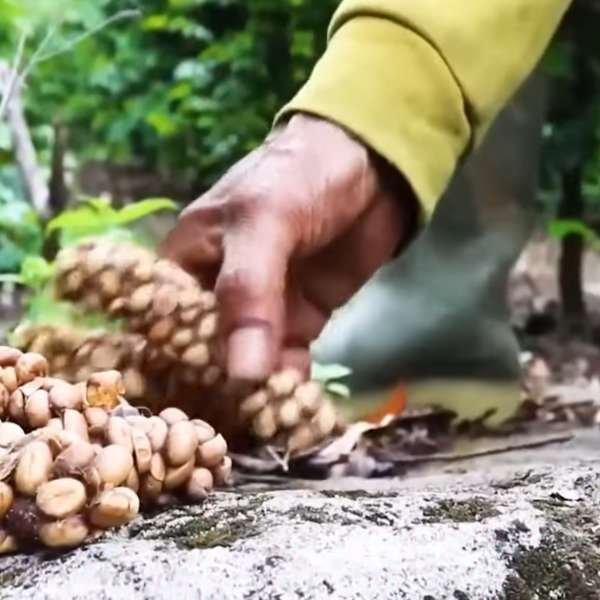Kopi Luwak coffee — a call wrapped in mystery and indulgence — stirs fascination across the globe. This isn’t just any espresso; it’s a brew born of nature’s curious collaboration and human reverence. Ever wondered a way to make Kopi Luwak coffee yourself? Prepare to embark on a journey thru amazing forests, animal digestion, and artisanal craft, culminating inside the creation of a cup that is as rare as it is fantastic.
What Is Kopi Luwak Coffee?

Known colloquially as civet espresso, Kopi Luwak is in contrast to anything you’ve tasted. Picture this: the Asian palm civet — a nocturnal creature with selective flavor — munches only on the ripest coffee cherries. Inside its digestive gadget, the beans go through a subtle, herbal fermentation. This alchemy transforms them, breaking down sour compounds, and yielding beans with a smooth, mellow taste and tantalizingly low acidity. Once retrieved, wiped clean, and roasted, those beans produce a cup that sings with complexity and softness, a true testament to nature’s artistry.
Make Kopi Luwak Coffee at Home

Sure, luxurious cafes serve Civet coffee at eye-watering expenses, however the real magic unfolds while you make Kopi Luwak espresso at domestic. Imagine the delight of grinding those uncommon beans your self, adjusting the brew on your exact flavor. Freshness peaks whilst you manage every step. Beyond saving cash, this hands-on technique deepens your connection to the espresso’s exclusive roots. It transforms a easy cup right into a sensory birthday celebration — rich aromas swirling, flavors unfolding, every sip an adventure.
Understanding the History

This extraordinary coffee hails from the lush islands of Indonesia during colonial times. Workers noticed wild civets eating espresso cherries, then passing the beans intact. Roasting these ‘recovered’ beans revealed a smoother, less bitter brew, sparking intrigue and admiration. Over decades, the process evolved into a revered craft, spreading to coffee-growing regions like the Philippines and Vietnam. Every cup carries whispers of history — colonial plantations, wild jungles, and human curiosity woven into its essence.
The Role of the Civet Cat in Kopi Luwak Coffee Production

The civet cat is more than a quirky participant — it’s the linchpin of Kopi Luwak’s mystique. With a refined palate, it selects only the finest cherries. Inside its gut, enzymes and acids subtly alter the beans’ proteins, taming bitterness and fostering a smooth, aromatic espresso. Yet, not all civet coffee is created equal; ethical concerns loom over civets held captive in cramped conditions. Responsible sourcing means supporting beans from wild or humanely treated civets — an important choice for the conscious coffee lover.
How the Unique Processing of Kopi Luwak Affects Its Flavor

As beans traverse the civet’s digestive system, a silent transformation occurs. Proteins responsible for harshness break down; natural fermentation bestows a gentle sweetness and velvet texture. The result? A espresso with muted acidity, earthy undertones, caramel whispers, and hints of chocolate and exotic spices. This complex symphony of flavors, layered and refined, makes Kopi Luwak stand apart — a cup that intrigues as much as it delights.
Essential Ingredients Needed

To make Kopi Luwak coffee that honors its legacy, start with authentic beans — the soul of the brew. Fresh, filtered water is essential to preserve purity. Choose your brewing weapon: a French press, pour-over setup, or espresso machine. A burr grinder is indispensable, gently crushing beans to unlock aromas without overheating. Optional but delightful are natural enhancers: raw honey’s floral sweetness, a stick of cinnamon’s warmth, or a splash of cream’s richness — but let the coffee’s essence always lead.
Where to Source Authentic Kopi Luwak Coffee Beans

Beware the flood of counterfeit Kopi Luwak beans flooding the market. Seek out trusted vendors who certify their beans’ wild origins and ethical harvesting practices. Indonesia — especially Sumatra and Java — and the Philippines stand as bastions of genuine production. Demand traceability, look for wildlife-friendly certifications, and steer clear of suspiciously cheap offerings. Authenticity ensures you sip espresso that is both exquisite and responsibly sourced.
Understanding the Different Types of Kopi Luwak Beans

Not all Kopi Luwak beans taste the same. Arabica beans, prized for their floral and fruity notes, dominate, delivering a delicate complexity. Robusta beans bring earthier, bolder flavors, with a bit more caffeine punch. Altitude and terroir further nuance the taste — beans from highlands sparkle with brightness, while lowland varieties embrace smoky depth. Exploring these varieties helps you match Kopi Luwak coffee to your personal flavor cravings.
How to Prepare Kopi Luwak Coffee Beans for Brewing

Start with a careful inspection — weed out debris and imperfect beans. Rinse them gently. Roast with patience at medium heat to coax out flavors without scorch. After roasting, rest beans 12 to 24 hours; this crucial degassing step primes them for brewing. Grind only moments before brewing — freshness is fleeting but vital. Each step is a brushstroke on your coffee canvas, crafting a masterpiece in your cup.
Cleaning and Roasting Kopi Luwak Coffee Beans at Home

Home roasting demands vigilance. Use a coffee roaster or sturdy pan, stirring beans consistently to avoid hot spots. Target about 400°F (205°C) for a medium roast, which captures sweetness while preserving delicate aromas. Don’t rush the cooling; let beans rest naturally, absorbing the complex notes that define Kopi Luwak’s charm.
Grinding Kopi Luwak Coffee

Grind size is your flavor’s sculptor. Coarse grounds for French press reveal the coffee’s full body; medium grind for pour-over teases out clarity and brightness; fine grind for espresso draws out intense, rich flavors. Use a burr grinder to ensure uniformity — it’s the difference between a harmonious cup and a muddled mess. Experiment and listen to your palate’s whispers.
Choosing the Best Brewing Method

Your brewing method colors the coffee’s final character. French press emphasizes richness and mouthfeel, pour-over teases subtle aromatic layers, espresso offers concentrated, intense flavors. Each reveals different facets of Kopi Luwak’s personality. Don’t hesitate to experiment — find what sings best to your senses.
How to Brew Kopi Luwak Coffee Using a French Press

Heat filtered water to just below boiling — about 200°F (93°C). Add one tablespoon of medium-coarse grounds per 4 ounces of water. Pour water evenly, stir lightly, and steep for four minutes. Press gently and pour immediately. The result is a velvety, aromatic cup that envelops you in luxury.
How to Brew Kopi Luwak Coffee Using a Pour Over Technique

Prepare a rinsed paper filter in your dripper. Add medium-fine grounds, then pour hot water in slow, circular motions to bloom the coffee. Maintain a steady pour until the desired volume is reached. This method yields a crisp, clear brew that highlights Kopi Luwak’s delicate notes.
Tips and Tricks

Grind finely, tamp evenly, and preheat your machine. Extract for 25-30 seconds for balance. Over-extract, and bitterness seeps in; under-extract, and you lose depth. Aim for a rich crema crowned shot, with caramel and chocolate notes that dance on your tongue.
How to Enhance the Flavor of Your Kopi Luwak Coffee Naturally

Enhance subtly. Add cinnamon sticks or vanilla pods during brewing to amplify warmth and complexity. A drizzle of raw honey or a splash of cream can soften edges and heighten sweetness. Steer clear of artificial sweeteners—they mask the nuanced character that defines Kopi Luwak.
Common Mistakes to Avoid

Beware stale beans, improper roast levels, incorrect grind size, and water temperature extremes. Cleanliness matters — leftover oils and residue spoil delicate flavors. Above all, don’t rush. Precision and patience unlock Kopi Luwak’s magic.
How to Store Kopi Luwak Coffee Beans to Keep Freshness

Keep beans in airtight, opaque containers, away from heat and light. Avoid refrigeration; moisture damages flavor. Buy small batches and consume quickly to enjoy vibrant, fresh coffee — because Kopi Luwak’s excellence fades fast.
Tasting Notes

Sip slowly. Notice the caramel sweetness, chocolate undertones, earthy whispers, and spice hints. Revel in the smooth body and gentle acidity. Let the flavors unfold on your palate, lingering with a delicate, satisfying finish.
Health Benefits and Considerations

Packed with antioxidants and lower acidity, Civet espresso can be gentler on sensitive stomachs. Still, caffeine content remains significant, so enjoy it in moderation. Always choose ethically sourced beans to avoid health and environmental concerns.
Sustainable and Ethical Concerns

Rising demand has fueled unethical civet farming — a practice to avoid. Opt for beans harvested from wild civets or humane farms, certified by trusted organizations. Supporting sustainability protects wildlife and preserves this extraordinary coffee’s future.
A Special Part of Your Daily Routine

Turn brewing into ritual. Use quality tools, savor aromas, and share with friends or family. Let Civet coffee transform everyday moments into luxurious escapes.
Conclusion
Mastering how to make Kopi Luwak coffee is a voyage of discovery — blending nature’s wonder, history, and human artistry. Source authentic beans, refine your roasting and brewing, and embrace ethical choices. Each cup is a celebration: a sip steeped in tradition, luxury, and unparalleled flavor.

